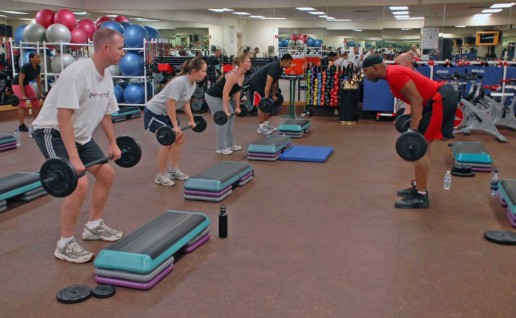Don't Mistake Perks for Corporate Culture
Are you mistaking great employee perks for great corporate culture? Too often, companies confuse employee perks with corporate culture. Continue reading to learn how to differentiate the two.
Too often, companies confuse perks and culture. Leaders think that to create a great culture, they should go purchase ping-pong and pool tables, get a keg for the office, or offer four-day workweeks. But these are all perks, not culture, which are two very different things. If a company only focuses on adding flashy perks, they may attract an employee, but they won’t retain them.
Don’t get me wrong, perks are great, but if there are beanbag chairs and no one likes each other, that doesn’t accomplish much. Allowing your employees to bring dogs to work is a perk. Texting an employee after they had to put their dog down is culture.
Culture is made up of emotion and experiences. It’s the intangible feelings created by tangible actions. It’s about caring for your people and creating a sense of community that allows employees to feel connected to something bigger than their individual role. It’s allowing them to feel comfortable to be themselves. Culture is creating an experience that employees wouldn’t otherwise be able to have. It’s spending the time to actually listen and support them in their personal lives, both good and bad. It’s about asking for their opinion and then acting on the feedback.
Perks are short-term happiness. They will attract talent, but if companies aren’t investing in professional and personal development, if they’re not willing to spend the time listening and gauging individual motivators, if there is a lack of empathy for an employee who is struggling with a personal issue, the employee will leave as soon as they are offered a higher paycheck elsewhere. It’s like a relationship: If all you get are flashy gifts from your significant other without any emotional investment or support, it will fizzle.
Culture is transparency, and that is a two-way-street. If leaders expect their staff to be transparent, they too have to be transparent with their staff. They stand up in front of their co-workers and share their mistakes that have cost money, damaged confidence and produced tears and heartache. They share mistakes to show employees, new and old, that if you are running 100 mph, mistakes will happen, but the future success will overshadow them. That you can learn from them.
What about the companies that have their core values of integrity and honesty painted on their walls, but when influential employees go against them, they’re not penalized? That’s fake. Culture is when leadership removes someone from the organization who is bringing others down regardless of them being the company’s top producer. They are dismissed because that is the right thing to do for the team.
Culture is holding people accountable. Pushing them to be better. Training them to learn how. Developing their skills and then allowing them to execute the directives. When people are challenged and pushed and they become better, you are establishing culture.
Building a culture is hard work. It’s not a one-month or one-year initiative. The truly great places to work—the ones that get all the recognition and accolades—didn’t start investing in employees for the awards. The awards were ancillary.
An employee who thinks of jumping ship can compare perks easily, but culture is much harder to evaluate. Instead of focusing on temporary benefits, leaders should focus on creating an environment which makes your company hard to leave.
SOURCE: Gimbel, T. (14 November 2018) "Don't Mistake Perks for Corporate Culture" (Web Blog Post). Retrieved from https://blog.shrm.org/blog/dont-mistake-perks-for-corporate-culture
Originally posted on LaSalle blog.
Do you have a strong foundation of best practices for your wellness program?
Nine out of 10 U.S. corporations offer some type of wellness initiative, according to a study by the International Foundation of Employee Benefit Plans. Read on to learn how you can improve involvement in your company's wellness program.
Wellness programs at the office are becoming increasingly popular, but not all of them are as successful as they could be. Here are three simple things you can do to improve involvement in your association’s wellness program.
The International Foundation of Employee Benefit Plan’s new study—A Closer Look: Workplace Wellness Trends—takes a deeper dive into data from one of its previously published studies, with an aim to “determine practices that lead to potential wellness success.”
To do so, IFEBP analyzed responses from 431 U.S. corporations and government entities, and what the foundation uncovered is that nine out of 10 of the respondents offer some type of wellness initiative.
But the wellness initiatives they offer vary, ranging from fitness challenges and employee assistance programs, to healthy food and drink choices in the kitchen and opportunities for employees to do charity work.
Employers’ goals for even instituting wellness initiatives differ widely too. “There are a lot of different reasons why employers have wellness programs,” said Julie Stich, associate vice president of content at IFEBP. “You want your employees to be healthier, not only to keep healthcare costs down, but you want to increase their morale, increase their productivity and efficiency while they’re in the office, [and] you want to cut back on absenteeism …”
No matter the program or the goals associated with it, here are a few ingredients IFEBP has found are essential in creating a successful wellness program:
Leadership involvement.
“What we’ve seen repeated over and over in our analysis of our data was the involvement of leadership,” Stich said. And it’s important that the leaders of the organization support it publicly and communicate about it with their employees, encouraging staff, for example, to go get their flu shot during work hours or get up from their desks and take a walk. But leadership participation in the initiative is also important. “When you’ve got a fitness challenge going on, you actually [want to] see the CEO taking their walk around the building as well,” Stich said.
Communication.
Employers might first ask their employees what they’d like to see in a wellness program, whether a flu shot or a lunch-and-learn session on stress management and then use that feedback in crafting the organization’s wellness program. But, after an organization has launched an initiative, “it’s important to always be reminding employees about your wellness program and its activities,” Stich said.
Incentives.
Offering incentives is a great way to motivate employee involvement in an organization’s wellness initiative. One way to do this is to put the names of staff who are participating in the program into a raffle and then hold a gift card drawing.
Stick it’s important to keep in mind that the results of such a program won’t be revealed quickly. “You’re not going to see a positive or any kind of ROI in the first year,” she said. “If you roll out a new program or a new component of your program, it takes on average three to five years before you can really get a good sense of whether this is working or not and what impact it’s having.”
SOURCE: Smith, K. (20 March 2018) "Do you have a strong foundation of best practices for your wellness program?" (Web Blog Post). Retrieved from https://www.provanthealth.com/industry-trends/2018/3/26/are-you-succeeding-at-the-three-the-foundational-elements-of-a-successful-program
Original source: Associations Now | Emily Bratcher | How to Boost the Success of Your Workplace Wellness Program
Facebook Unveils New Career-Development Portal
Recently Facebook unveiled a new career-development portal that will provide accessible, relevant content to entry-level job seekers. Read this blog post to learn more.
Facebook is jumping into the learning market in a big way, announcing the launch of Learn with Facebook at its New York offices yesterday, a big step toward the social-networking giant’s recently stated goal of equipping 1 million business owners in the U.S. with digital skills by 2020.
Learn with Facebook is a career-development portal that offers introductory, free-of-charge courses in both hard and soft skills. It’s aimed at people hoping to re-enter the workforce after a period of absence as well as those wishing to acquire skills that will help them compete for entry-level jobs in the digital economy, says Fatima Saliu, Facebook’s head of policy marketing.
“We’re facing a major skills gap in this country, and Learn with Facebook is our attempt to address that,” she says. Learn with Facebook has already been launched in France and Germany, says Saliu, and will expand to other markets as well.
Learn with Facebook is a direct move into LinkedIn’s territory, although Facebook representatives denied yesterday that it was seeking to compete directly with the business-focused social network. LinkedIn has steadily built up its own learning offerings since it acquired Lynda.com in 2015 and rebranded it as LinkedIn Learning. Last week, Harvard Business Publishing announced a new partnership with LinkedIn that will allow customers of HBP to access its content directly via LinkedIn Learning’s platform.
The courses currently available on Learn with Facebook include tutorials on digital marketing as well as resume writing and job interviewing. Facebook is working with the Goodwill Community Foundation to develop course material and adapt it to the needs of local communities, says Saliu. “Our goal is to provide accessible, relevant content to entry-level job seekers,” she says.
Facebook is also enhancing its Jobs on Facebook services by allowing businesses to share their job postings on Facebook groups as well as on their own pages and newsfeeds. The company says more than 1 million people have found jobs via Facebook since it launched the service last year.
Facebook is also making updates to its Mentorship tool, which is designed to make it easier for members of Facebook groups to connect with others who have specific experience or expertise. Users will now be able to sign up to share information on what they’re offering or looking for, making it easier for other Group members to find and connect with them on their own rather than going through a Group administrator first, says Michelle Mederos, Facebook Mentorship product designer.
Facebook Groups have enabled people working in high-stress, low-prestige occupations such as certified nursing assistant obtain mentoring and support, says Seth Movsovitz, founder of a Facebook Group called CNAs Only.
Although LinkedIn currently remains the dominant social-media player in the jobs space, it’s clear that Facebook is determined to be a big player as well. For employers that are desperate to fill jobs in a tight labor market, more competition between the two can only be a good thing.
SOURCE: McIlvaine, A. (15 November 2018) "Facebook Unveils New Career-Development Portal" (Web Blog Post). Retrieved from https://hrexecutive.com/facebook-unveils-new-career-development-portal/
What Benefits and Perks Do Employees Actually Want?
What employee benefits does your organization offer? Today's benefit offerings have grown to include much more than just healthcare benefits. Read this blog post to learn what benefits and perks your employees want.
With open enrollment just around the corner for most companies, employee benefits are top of mind. Today’s offerings have grown to include more than just medical, dental, and vision coverage. Companies are now including perks like scheduling flexibility, tuition reimbursement, and even parental assistance as part of their overall package.
Let’s cut through the hype: what benefits and perks do employees actually care about? As someone who has administered his fair share of open enrollments, I’ve wondered the same thing. But over the years, I’ve learned that you sometimes just need to ask. By running benefits “pulse” surveys, HR teams can get the data and perspective they need to tailor their company’s offerings.
It’s also important to research what’s happening in the marketplace and what your competitors are doing. When was the last time you spoke to your benefits broker? They’ll have the greatest visibility into what types of claims employees are filing and where you might have coverage gaps. Working closely with your broker is one of the easiest ways to ensure you’re meeting employees’ expectations and the job market’s standards.
While studies have shown that traditional medical, dental, and vision coverage are still employees’ top priority, here are some non-traditional offerings that your employees may be clamoring for:
- Parental assistance and leave: Companies are now enriching their policies with tools that assist new parents, including everything from post-birth specialist care to reimbursements for newborn necessities.
- Virtual medical care: One of the hottest trends is virtual medical care. Employees can have access to a doctor 24/7 via a laptop or smartphone, all in the comfort of their own home.
- Tuition reimbursement and assistance: Today, Americans owe over $1.3 trillion in student loans. That’s more than twice what they owed a decade ago. Needless to say, young employees are looking for companies that offer some type of student loan assistance.
- Mental health: Over 18 percent of adults in the United States experience some form of anxiety disorder. Given the growing national focus on mental health issues, it’s no surprise that workplaces are joining the conversation. Increasingly, businesses are offering workers better access to mental health therapists and coaches.
- Physical wellness: Two words: gym reimbursements. Sometimes the motivation to work out can be hard to muster, but when your gym membership is paid for by your employer, why not take full advantage? Healthier, more active employees could lead to lower medical insurance costs, too!
Those are just some of the unique benefits that you should consider offering employees. At the end of the day, I’ve learned that each workplace has different needs and wants. Be sure to regularly survey employees on their preferences and keep tabs on what peer companies are offering.
SOURCE: Cosme, J. (14 November 2018) "What Benefits and Perks Do Employees Actually Want?" (Web Blog Post). Retrieved from https://blog.shrm.org/blog/what-benefits-and-perks-do-employees-actually-want
Creating Better Employee Benefits With Advanced Analytics
It is important to provide a workplace, employee benefits and payment system that keep your employees happy. Read this blog post to learn how you can create better employee benefits with advanced analytics.
Job satisfaction is the most important part of maintaining a happy workforce. If you have a workforce that feels like they could get a better deal elsewhere then they are likely to leave.
It is therefore important to provide a working environment, benefits and payment system, that keeps your employees happy without breaking the bank.
Analytics are being used to make sure that this is being done effectively, seeing where discontent is occurring and helping to suggest how this can be solved.
For instance, there are research companies that can use text analysis tools to analyze hundreds, if not thousands of survey entries that can give a holistic view of employee benefits. Often when survey results are being analyzed by an individual, it is difficult to gauge the overall feeling and there can be bias put on the results.
It also allows for HR to note the frequency of meetings with individuals as well as the frequency and size of any pay rises. If it is flagged that somebody hasn’t had a meeting with HR where they can directly communicate any concerns for a considerable amount of time, then tho scan be rectified.
Analytics can also be used to investigate which teams are happiest, have the highest retention rates or are the most profitable. This then allows companies to investigate in detail what is making these teams happiest or most productive, then create benefit packages to create similar results for other teams in the company.
Analytics and data have allowed companies to collect data to make their workforces happier and more content. This, in turn, creates situations where employees are eager to work and appreciative of the benefits they receive, improving ROI and increasing productivity.
SOURCE: Pannaman, E. (12 October 2018) "Creating Better Employee Benefits With Advanced Analytics" (Web Blog Post). Retrieved from https://channels.theinnovationenterprise.com/articles/202-creating-better-employee-benefits-with-advanced-analytics
5 critical elements to consider when choosing an HSA administrator
The Employee Benefit Research Institute recently reported that 83 percent of today’s workforce said health insurance was very or extremely important in deciding whether they would change jobs or not. Read on to learn more.
If anyone needed any reminding, health insurance is still an urgent matter to today’s employees. According to Employee Benefit Research Institute’s 2017 Health and Workplace Benefits Survey, 83% of the workforce said that health insurance was very or extremely important in deciding whether to stay in or change jobs. Yet research has uncovered that employees tend to delay or disengage from retirement and healthcare decisions, which they view as difficult and complex.
Fortunately, with consumer-driven healthcare plans and health savings accounts on the rise, benefits managers have a real opportunity to turn this frustrating situation into a positive one for their workforce. A critical step in doing so is choosing the right health savings administrator.
Employers should consider the following five elements when choosing a health savings administrator, or for evaluating the one with which you’re currently working.
1. Minimize risk by ensuring business alignment. Look for a health savings administrator that aligns with your company’s mission and business goals. Lack of business alignment can create real risks to your organization and employees and can damage your company brand and employee experience. For example, if your account administrator nickels-and-dimes you and your employees with added fees, you’ll experience higher costs and reduced employee satisfaction.
2. Service, support are key to employee satisfaction. It’s a fact: Employees will have HSA-related questions — probably a lot of them. Their questions may range from pharmacy networks and claims to the details of IRS rules. That’s why account management and customer service support from your health savings administrator are vital. Having first-class customer service means that employees will be better educated on their savings accounts, which can result in HSA adoption and use to their fullest potential.

3. Education, communication drive adoption. Educating employees about health savings accounts using various methods is critical, especially in the first year of adoption. This ensures your employees understand the true benefits and how to maximize their account. As CDHPs require more “skin in the game,” consumers show a higher likelihood to investigate costs, look for care alternatives, use virtual care options, and negotiate payments with providers. These are all positive outcomes of HSA adoption, and an HSA administrator oftentimes can offer shopping, price and quality transparency tools to enable your employees to make these healthcare decisions.
4. Understand the HSA admin’s technology. Because most spending and savings account transactions are conducted electronically, it’s critical that your administrator’s technology platform be configured to deliver a positive user experience that aligns with your expectations. It should allow for flexibility to add or adjust offerings and enable personalization and differentiation appropriate for your brand.
Be aware that some vendors have separate technology platforms, each running separate products (i.e., HSAs versus FSAs) and only integrate through simple programming interfaces. Because the accounts are not truly integrated, consumers may need to play a bigger role in choosing which accounts their dollars come from and how they’re paid, leading to consumer frustration and an increase in customer service call volume. With a fully integrated platform, claims flow seamlessly between accounts over multiple plan years, products and payment rules.
5. Evaluate your financial investment. Transparent pricing and fees from your health savings administrator is important. Administrators can provide value in a variety of ways including tiered product offerings, no traditional banking fees or hidden costs, and dedicated customer service. It’s important to know what these costs are up front.
Evaluate your financial investment by knowing whether or not your health savings administrator charges for program upgrades, multiple debit cards, unique data integration requirements, ad-hoc reports and more. These fees can add up and result in a final investment for which your company didn’t plan. And, it’s best to know in advance if your account holders will be charged any additional fees. Not communicating these potential fees at adoption can lead to dissatisfaction, which can then hurt your employee satisfaction ratings and complete adoption of the savings account products.
Choosing a health savings administer is a critical decision that affects not only employee satisfaction but the entire company. With eight in 10 employees ranking their benefits satisfaction as extremely or very important in terms of job satisfaction, according to EBRI, taking the time to fully vet your health savings administrator will pay dividends.
SOURCE: Santino, S. (5 November 2018) "5 critical elements to consider when choosing an HSA administrator" (Web Blog Post). Retrieved from https://www.employeebenefitadviser.com/opinion/what-to-consider-when-choosing-an-hsa-administrator
DISCOVER THE WELLNESS TRENDS FOR 2019
Did you know: A clear space equals a clear mind. Minimalism is one of the new wellness trends for the New Year. Read this blog post for more 2019 wellness trends.
It’s that time of year again when we cast our minds forward and bring you our predictions for the wellness trends that are set to relax, improve and make us feel better about ourselves in 2019. And let’s be honest it feels as if there’s a new trend every week at the moment, so we’ve sifted through the trend trough to tell you ALL about the ones you absolutely need to know about!
Reconnecting With Nature
As a predecessor to the digital detox trend of last year (although heaven knows we still haven’t mastered that one yet!) 2019 is all about shifting our backsides off of the sofa and actually *gasp* leaving our homes to reconnect with nature. The focus is very much on disconnecting i.e. leaving your phones and even your fitness trackers (sorry you’ll have to manage without the steps for this one) in order to reconnect. You see exercising outside is all well and good, but it starts to become detrimental when we begin putting too much pressure on ourselves to hit the next PB or when we become obsessed with comparing ourselves against our friends on the Fitbit leaderboard.
Hey, I’m all for healthy competition and that heady endorphin rush when you smash out an all-time best, but to truly enjoy the benefits of what nature can do for our health we need to unplug and pay attention to what is out there – without the distractions!
From moonlit yoga on the beach to forest bathing in the sensual shadiness of the beautiful English woodland, learning to embrace your inner mother nature is all about fine-tuning the senses. It’s essentially another branch of mindfulness that allows us to break free from the stressful trappings of the modern world and find inner peace and gratitude for the world around us.
Soothing Sounds
You must have that one song that makes you feel amazing? That song that no matter how down in the dumps you are, when you hear those first notes you’re up dancing and feeling as if nothing can stop you. Music’s funny like that isn’t it? It evokes all kinds of emotions in us – from positive uplifting vibes, sorrow and sadness, motivation and drive, right through to silliness and freedom of expression – music has a power over us like no other.
And the sound, of any description, is no different. Think about when you visit a spa, often there will be sounds of the rainforest, birds chattering in trees or that peaceful drift you off to sleep music, floating over the space, creating a calm and serene ambiance and helping you to relax and switch off.
Sound therapy works through the healing power of sound vibration and frequencies. All of us have our own natural frequencies and when we are exposed to the external frequencies of singing bowls, gongs, tuning forks, drums etc. and allow them to wash over us and resonate with us, natural healing of both the body and mind can begin to occur. For example, Tibetan singing bowls can help people to experience a deep sense of relaxation, which can relieve pain, help lower blood pressure, reduce stress, improve circulation and blood flow, balance the Chakras, create focus and emotional clarity and leave people feeling at peace and happy with themselves.
Everyone has the ability to connect with the healing power of sound and most important of all it gives us that chance to focus on just one of our senses, which in a world where our senses are continually blasted with information overload, this is one of life’s most simple of luxuries. Sound classes are becoming increasingly popular for this very reason and many also incorporate the practices of yoga and meditation within them to further aid the wellness experience.
Color Therapy
Do you have a favorite color? There’s a good reason why you are drawn to one color over another and it’s all to do with energy and the way it makes you feel.
Color is energy that is transmitted on different wavelengths and frequencies to create different colored light. There are seven shades of visible light, the rainbow colors, then there is white which contains all of the 7 shades, black which absorbs light and therefore appears void of color, and then there are literally millions of invisible colors that our eyes cannot see. Color therapy, or Chromotherapy to give it its official name, is all about using color to enhance our health and wellness in certain ways. Each color has its own vibrational frequency that relates to different physical symptoms and emotions.
BLUE – This is a calming color that is used to ease symptoms of pain, anxiety, depression and can even aid sleep. Yes I know we’re told the blue light emitted from our screens is bad for us, but that’s a synthetic digital light, so I’m afraid scrolling through Instagram in bed won’t have the same effect! Research has also shown that blue light can help lessen inflammation, lower fevers, reduce high blood pressure and relieve migraines, due to it’s cooling almost anesthetic style energy.
RED – The fiery, powerful color that denotes passion and confidence. It’s bold and powerful and will give you balls when you need it most. And as such, it is thought that being exposed to red light will increase your pulse, raise your blood pressure and increase your breathing rate. Doesn’t necessarily sound too good, right? But red is the color to energize, to motivate and to put yourself out there and show people you mean business. Infrared therapy is also used to activate collagen cells, stimulate the skin to help reduce the appearance of fine lines and wrinkles and can speed up the healing process.
YELLOW – This bright cheerful color does as you would expect; it uplifts, invokes optimism and a real sense of self love in a person.
GREEN – The color of nature, green is associated with harmony and it provides a neutral, positive and calming effect.
ORANGE – This color can raise energy levels and help improve mood, I mean who can’t but raise a smile when you see something bright orange!?!
PURPLE – The mean and moody one, the color of royalty, richness and luxury. Purple is the color for tranquility and works well in a detox sense, stripping the body and mind of impurities and can help patients deal with that sense of mind over matter when dealing with chronic pain.
And then there’s Colorstrology – a bit like astrology, but this is the idea that each birth month has its own color, which is a reflection of your personality. To find out yours go to the Pantone website and pop in your birth date.
2019 sure is set to be a colorful one that’s for sure!
Sleep Hygiene
We all need sleep to survive, it’s a chance for our body and mind to rest, recharge, repair and grow. However, there aren’t many of us that are a) getting enough sleep and b) getting good quality sleep. 2018 saw the rise in good sleeping practices, with power naps and sleep yoga hitting the wellness scene. But 2019 is set to move on from this by teaching us the ways in which we can employ these good habits at home. And it’s much more about quality rather than quantity. Because yes we should be aiming for around about 7 hours of shut-eye a night, but surely 4 hours of quality sleep is way more beneficial than 8 hours of disrupted sleep?
Sleep hygiene is about being ‘clean’ with your sleep, which means setting good practices and routines such as the following:
- Avoiding caffeine late at night.
- Switching off screens and other devices at least an hour before going to bed – and ideally, you don’t even want them in your bedroom.
- Get the temperature just right- not too hot and not too cold.
- Ensure the room is dark – blackout blinds are your new best friend.
- Keep noise to a minimum, or if that’s impossible due to noisy neighbors or yapping dogs then try listening to white noise which will drown out the other sounds and has a calming, sleep-inducing effect.
- Comfort is key to ensure you have a good mattress, a duvet tog that you’re happy with and good supportive pillows.
You may well think that you can catch up on any missed sleep during the week at the weekend, but irregular sleep is far more damaging. Instead aim to finish work by a set time and give yourself a deadline to be in bed, even if you’re up there and reading for half an hour beforehand, that will help you relax and unwind from the day.
And if you’re someone who struggles to switch off and get to sleep try having a warm bath, drinking a hot milky drink, meditating, or practicing some deep breathing exercises before settling down for the night. These are all things that help induce sleepiness and should see you dozing off in no time.
Ultimately if you eat well, exercise regularly and keep those stress levels down then your sleep hygiene should be pretty damn clean. If you don’t… then perhaps that’s something you could work on in 2019!
Less Is More
Minimalism, the KonMari method, decluttering… call it what you like, but essentially all you need to know is that a clear space equals a clear mind.
Go on, try it.
Choose just one cupboard in one room of your house, drag everything out and then set to work sorting out what you do and don’t need. It’ll be tough, especially when you start finding long lost treasures or useful kitchen gadgets you’d forgotten about, or that top you wore back in 1992 that made you look like a bohemian princess, but you need to set yourself limits. Marie Kondo, the queen of clutter-free living, theorizes that we should only hang onto possessions that ‘spark joy’, those that don’t only serve to hold us back and bring negativity into our lives. And it’s certainly a good place to start. Can you honestly say that vegetable peeler shaped like a pencil sharpener brings you joy? Or does it annoy you because every time you go to open the drawer it catches and makes the drawer jam? And that book you’ve clung onto from your days at uni, the one riddled with post-it notes and pencil scrawled study notes… does it bring you joy? You can’t ever read it properly again, it’s probably out of date and so therefore no longer suitable as a study guide for anyone else and all it’s really doing is taking up space and gathering dust on your bookshelf.
The thought of getting rid of your belongings is a scary one. Objects become security blankets, but they are restrictive and oppressive and are preventing you from living your best life. Existing in a tidy and clear space, whether it’s within the work or home environment, can help reduce stress levels, conserve mental energy, give us clarity, make us more productive and most importantly of all can make us feel in control. And when you’re in control you can achieve anything!
Clean Air
As much as we’re all for clean air outside, is it actually doing us any good if our home or work environment is riddled with all kinds of chemicals – yes I’m deffo thinking of those plug-in air fresheners!!
Whether you fill your rooms with plants (they’re amazing at purifying the air and look pretty spesh too!), pay more attention to the ingredients used in your cleaning sprays etc. or even download an app that can tell you how pure the air is – yes really! – 2019 is 100% about living clean. We’ve done the clean eating thing, started to adopt the clean sleeping thing, so it was only a question of time before clean breathing became a thing.
Sales of air purifying plants have more or less tripled over the past year as people strive for that natural air in their homes. If you listened to your Biology teacher at school, you’ll know that plants are capable of turning carbon dioxide into vital oxygen, but they are also great at absorbing unwanted nasties such as formaldehyde, benzene, ammonia, acetone etc. which are found in so many of the items we have in our homes and workspaces.
Crystal Clear Water
Crystals were everywhere in 2018, helping us with their energizing vibes and well they just look so pretty don’t they!?! And don’t worry, they’re not going anywhere, they’re just infiltrating other areas of our lives, namely… our water bottles. Yep, that’s right, you’ve seen the fruit, veg and herb infuser water bottles, now it’s time for the crystal infused ones!
Not only does it take a good Instagram picture (these are beautiful things peeps!) but the crystal gets to work its magic by pouring out all of its positive energy into the water you’ll be sipping on. Crystal gurus have been doing this for donkey’s years, but for us newbies, crystal-infused water is big news. It’s basically creating an essence and so it is up to you which crystal to insert in your water bottle for any given day.
One thing you must, must, MUST make sure of is that any crystal you use is safe to be put in water. Certain stones may dissolve, whilst others may contain lead or corrosive chemicals. A quick Google search is all that should be needed to confirm whether a crystal is safe in water or not and it’s worth keeping a list of the ones you can and cannot use and storing them in different places so you don’t get confused.
It certainly takes drinking crystal clear water to a whole different level, doesn’t it!?!
SOURCE: Stafferton, B. (11 July 2018) "DISCOVER THE WELLNESS TRENDS FOR 2019" (Web Blog Post). Retrieved from https://artofhealthyliving.com/discover-wellness-trends-2019/
How AI can predict the employees who are about to quit
Employers are now utilizing artificial intelligence (AI) to help predict how likely it is that an employee will stay with their company. Read this blog post to learn more.
Tim Reilly had a problem: Employees at Benchmark's senior living facilities kept quitting.
Reilly, vice president of human resources at Benchmark, a Massachusetts-based assisted living facility provider with employees throughout the Northeast, was consistently frustrated with the number of employees that were leaving their jobs. Staff turnover was climbing toward 50%, and after many approaches to improve retention, Benchmark turned to Arena, a platform that uses artificial intelligence to predict how likely it is that an employee will stay in their job.
“Our new vision is about human connection,” he says. “With a turnover rate that’s double digits, how do you really transform lives or have that major impact and human connection with people who are changing rapidly?”
Since Benchmark started using Arena, staff turnover has fallen 10%, compared to the same time last year. During the hiring process, Arena looks at third-party data, like labor market statistics, combined with applicants' resume information and an employee assessment that will give them a better sense of how long a candidate is likely to stay in a role.
“The core problem we’re solving is that individuals aren’t always great at hiring,” says Michael Rosenbaum, chairman of Arena. “Job applicants don’t always know where they’re likely to be happiest. By using the predictive power of data, we’re essentially helping to answer that question.”
Arena isn’t interested in how an employee responds to assessment questions, he says. They’re much more interested in how employees approach the questions.
“What you’re really doing is your collecting some information about how people react to stress,” Rosenbaum adds.
For example, if an employee is applying for a housekeeping role, Arena may give them a timed advanced math question to complete — something they may never use in their actual job. Arena then studies how the candidate responds to the question — analyzing key strokes and tracking how the individual tackles the challenge. The software can then get a better sense of how an applicant responds under pressure.
Overtime, Arena’s algorithm learns from the data it collects. The system tracks how long a specific employee stays at the company and can then better predict, moving forward, whether other employees with similar characteristics will stay.
“Overtime they are able to sort of refine that prediction about those that are most likely to stay, or be retained with our organization,” Reilly says. “They may also make a prediction on someone who might not last very long.”
Reilly says he’s been encouraging hiring managers at the facilities to use the data given to them by Arena to take a closer look at the candidates the platform rates as highly likely to stay in their roles. Although it’s ultimately up to the hiring manager who they select.
“Focus your time on the [candidates] that are more likely to stay with us longer,” Reilly says.
For now, Arena exclusively works with healthcare companies. The platform is currently being used by companies like Sunrise Senior Living and the Mount Sinai Health System in New York. Moving forward, Rosenbaum says, they’re hoping to get into other industries, although he would not specify which.
Rosenbaum says Arena is not only focused on improving the quality of life for employees, but also for the patients and seniors that use the facilities. The happiness of patients, he says, is closely tied to those that are caring for them.
“Is someone who is in a senior living community happy? Do they have a positive experience? It is very closely related to who’s caring for them, who’s supporting them,” he says.
This article originally appeared in Employee Benefit News.
SOURCE: Hroncich, C. (15 November 2018) "How AI can predict the employees who are about to quit" (Web Blog Post). Retrieved from: https://www.employeebenefitadviser.com/news/how-ai-can-predict-the-employees-who-are-about-to-quit?brief=00000152-1443-d1cc-a5fa-7cfba3c60000
How to create a strong communication plan for open enrollment
What is your communication plan for open enrollment? Now that you have your plan changes locked in, it's time to focus on communicating those changes to your employees. Read this blog post to learn more.
Ready or not… the Benefits Super Bowl is here! Whether you are a broker, benefits manager or anywhere in between, you have been knee-deep on plan updates, rate reviews and benefit changes for months. Now that the plan changes are locked, it’s go-time! The focus is now on communicating and educating employees about their benefit options.
It takes an enormous amount of planning and execution to provide a productive open enrollment experience for employees. But, it is well worth it as this is often the only time during the year that employees stop to consider their benefit options.
Learn from past wins and misses
Consider previous years’ open enrollment communications and ask yourself the following:
- What is the feedback you received from employees (the good, the bad and the ugly)?
- What were the most common questions?
- Were there key pieces of information employees had difficulty finding?
Learn from the answers to these questions and then craft your content in a clear and concise manner that is easier for employees to digest.
The communication medium is key to your success
Now that you’ve developed the content to communicate, the next equally important step is determining how, when and where you deliver this information. Is there a centralized location where employees can find information for both core and voluntary benefits? Is the information in a format that the employee can easily share with his or her significant other?
It is critical to have multi-channel communications to reach your audience. Some employees may naturally gravitate to a company-wide email and the company intranet, while others lean on more interactive mediums like E-books, text messages, webinars or lunch and learns. Providing a variety of communication avenues ensures you are reaching employees where they want to receive information.
Make sure your communications campaign provides educational materials at each of the key milestones during the open enrollment journey–such as prior to enrollment, midway through enrollment, and right before enrollment closes. Wherever possible, always support employees through the process and give them options to reach out for help.
How to communicate the same benefits to a diverse workforce
You are likely communicating to a group of employees with diverse needs and wants. What may be appealing to an entry-level recent grad may not resonate with a senior-level employee nearing retirement. For example, employees with young children may be especially interested in accident insurance or pet owners might look to pet insurance to help offset the costs of well-visits and routine care. If possible, tailor your communications to different segments of the employee population.
Communicating voluntary health-related benefits
Core medical benefits are what employees gravitate to during the enrollment period. Are you offering voluntary benefits to employees? The most successful voluntary benefit programs are positioned next to core medical plans on the enrollment platform. This shows employees how those voluntary benefits (critical illness, accident insurance and hospital indemnity) complement the core offerings with extended protection.
When voluntary benefit programs are positioned as an integral part of the employee benefits experience, employees are more likely to understand the value and appreciate the support provided by their employer. For example, a critical illness program can help to bridge the gap of a high-deductible health plan in the case of a covered critical condition. Communicate that voluntary benefits can be an integral part of a “Total Rewards Package” and can contribute to overall financial wellness.
Review and refine
Finally, don’t miss your opportunity at the end of enrollment to review how your communication campaign performed. Pull stats and analyze your communication campaign for next year’s open enrollment… it is never too early to start! HR managers can glean valuable information and metrics from the employee experience.
SOURCE: Marcia, P. (1 November 2018) "How to create a strong communication plan for open enrollment" (Web Blog Post). Retrieved from https://www.benefitspro.com/2018/11/01/how-to-create-a-strong-communication-plan-for-open/
Civic time off: The benefit getting employees to the polls
Does your organization offer civic time off as an employee benefit? Some companies are looking to change low voter engagement by offering new benefits to employees who vote. Read on to learn more.
Voter engagement for midterm engagement historically has been poor. Some companies are offering new benefits to change that — even offering the day off to encourage employees to vote.
American employers that provide paid time off stands at about 44%, a record high, according to the latest research from the Society for Human Resource Management survey. The human resource organization estimates 29% of these companies offer employers more than an hour or two of voting time.
Despite such accommodations, about 60% of Americans didn’t vote in the last midterm election, according to research by Vote.org, a voters’ advocacy organization. The biggest obstacle to voting was scheduling conflicts; 35% of people said they couldn’t vote because of work and school.
“There’s no federal protection for voting leave for employees, which means it’s up to the states to set their own policies. Policies are inconsistent, but some states have no laws at all,” says Colette Kessler, director of partnerships at Vote.org. “This puts employers in a powerful position to enable employees to get to vote.”
But as more Americans prepare to head to the polls for key elections in 46 states, employers including Patagonia, Zenefits and Honest Tea, are opting to give employees paid time off to make their voice heard.
Outdoor retailer Patagonia, for instance, is closing its stores as well as its headquarters and distribution and customer-service center to give employees paid time off to vote. “No American should have to choose between a paycheck and fulfilling his or her duty as a citizen,” Patagonia CEO Rose Marcario wrote in a company blog post.
Meanwhile, human resource software company Zenefits implemented a new program in which employees can take time off to vote the same way they would for a doctor’s appointment. Voting won’t cut into their sick days, vacation time or paid time off. Instead, voting gets its own designation — civic time off, or CTO. That free time can be used for voting, volunteering for a candidate, attending a school board meeting or canvassing.
“Civic time off is a new concept for the industry, and we’re excited to be among the first to offer such a benefit,” says Beth Steinberg, chief people officer at Zenefits, in a letter on the company blog. “At Zenefits, it’s been a priority to help build our team’s skill set not only as it pertains to professional career growth, but also to encourage their development outside of the workplace as engaged and empowered citizens.”
Vote.org consults with companies interested in implementing a CTO program. Based on individual business models and company culture, the organization will suggest either full days off, half days or flexible scheduling.
“One benefit we’re really excited about is offering employees a half day. It gives employees the ability to get to their polling places and do their morning routine — like getting the kids to school and running errands,” Kessler says. “And later they can convene with colleagues and celebrate Election Day. We’re seeing HR teams create afternoon lunch parties to celebrate.”
Kessler says some companies are hesitant to provide time off for voting because they’re worried about losing productivity. However, most of the companies she’s worked with have been enthusiastic about providing their workforce with time off to vote.
“We don’t see any drawbacks to offering our employees flexibility on Election Day,” says Seth Goldman, co-founder and CEO emeritus of beverage company Honest Tea, which allows its 50 employees to take a few hours of paid time off go to the polls on Election Day, at their convenience. “It’s a right we all should be proud to recognize and support however we can.”
SOURCE: Webster, K. (5 November 2018) "Civic time off: The benefit getting employees to the polls" (Web Blog Post). Retrieved from: https://www.employeebenefitadviser.com/news/civic-time-off-the-benefit-getting-employees-to-the-polls?feed=00000152-a2fb-d118-ab57-b3ff6e310000










